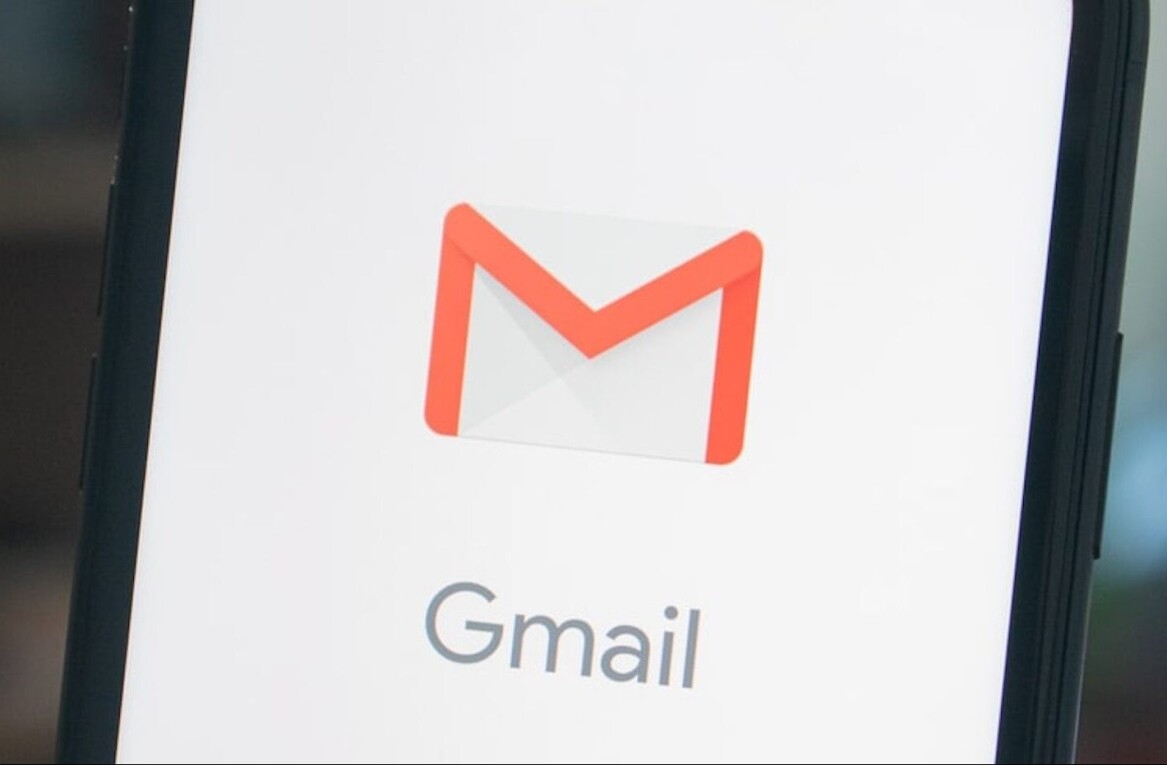
These are exciting times for the artificial intelligence community. Interest in the field is growing at an accelerating pace, registration at academic and professional machine learning courses is soaring, attendance in AI conferences is at an all-time high, and AI algorithms have become a vital component of many applications we use every day.
But as with any field going through the hype cycle, AI is surrounded by a saturation of information, much of which is misleading or of little value. I can tell that from my inbox. Every day, I receive several pitches that claim company X has solved problem Y with “advanced AI techniques,” or that AI can now solve problem Z. A few years ago, I might have opened and read these emails with interest. But today, I’m faced with AI fatigue, marked by a dwindling interest and a growing suspicion toward any email that has the term “artificial intelligence” in the subject.
Many of those emails remain unopened and quickly get buried under the ton of other emails I receive every day. For the most part, I don’t regret ignoring them. But I also know that occasionally, I miss out on a valuable gem that slips my attention for want of proper presentation.
In this post, I will try to provide a few guidelines for writing good AI pitches based on my experience covering the field for several years. This is mainly a guide for the PR people who are writing AI pitches. But it should also serve reporters, who can use it to tell a good AI pitch from one that contains too much hype and too little value.
First, educate yourself

As I see it, one of the main problems in AI pitches is that the people writing them often don’t have a full understanding of the technology. If you’re a PR agent writing a pitch on behalf of a client, you should have more than a basic understanding of how their technology works. Likewise, if you’re a reporter who is covering AI, you should have more than a passing knowledge of different AI trends and be able to pose the right questions when receiving a pitch.
These days, AI is mostly about machine learning and deep learning. But there’s a lot more to the field. You must know about symbolic AI, probabilistic programming, hybrid systems, and a lot more. Even staying within the learning algorithms domain, you must know about different machine learning algorithms and various types of artificial neural networks, and you must understand the shortcomings of current AI systems, such as algorithmic bias, interpretability problems, and adversarial vulnerabilities.
[Read: ]
Fortunately, we’ve covered a lot of the above topics in our “Demystifying AI” series, which provides an overview of many key artificial intelligence concepts without going into coding and mathematics.
Beyond having a high-level perspective on AI, you should also have some hands-on experience, especially with machine learning. If you already have basic programming skills, going through an introductory course on data science and machine learning with Python should give you a solid foundation. Alternatively, you can acquaint yourself with machine learning concepts with Microsoft Excel. The goal is not to become a machine learning engineer but to know enough about AI to not make a fool of yourself when writing about it.
AI research pitches: focus on a scientific breakthrough

Before we proceed to actual AI pitches, let me point out that there’s an important difference between doing AI research and developing commercial AI products. AI research is what you see at conferences such as NeurIPS, ICLR, and CVPR. The goal is to push the boundaries of science, not to create applications that have a working business model. AI products, on the other hand, are about putting existing technologies to effective use and solving problems that many people face in their daily lives. AI research eventually finds its way into applications, but it takes time.
Pitching AI research is not very hard, given the paper presents a genuine idea. Starting with the subject of your email, you should explicitly state that you’re pitching a research paper. You can do this by starting your subject with “Research:” followed by the key point in your research solves.
If the paper has been accepted at a major AI conference or published in a peer-reviewed journal, mention the name of the venue in the subject. This shows at first glance that your work has been verified and confirmed by experts in the field. Note, however, that acceptance at a major conference of publication is not an absolute requirement. In the past few years, I’ve covered several papers that were only published on arXiv without being presented at any conference.
Here’s a decent subject line. It shows both that the research has been peer-reviewed and addresses a specific problem, though it could have been a bit more specific on the applications:
Nature study shows AI applications in the Operating Room
Here’s another subject that is too generic but still managed to catch my attention because of the pitch was timely and sent before the NeurIPS conference:
NeurIPS 2020: New research delivers more accurate, robust neural network models, key for advancing & scaling AI
Now, we get to the body of the email. Unfortunately, either out of haste or lack of knowledge, some senders just copy-paste parts of the paper abstract into the email and send it to reporters and analysts. There’s a fundamental problem with this approach. First, the language of the abstract is very dense, and many reporters don’t understand it either because it’s too technical or because the person who wrote it is not a very good English writer (passive language, jargon, dangling antecedents, etc.). Second, the abstract is too long for a pitch and it contains many premises and facts that do not add to the value of the pitch.
The body of the email should provide a gentle description of the AI research, highlighting the main goal it achieves. For instance, if you’ve developed a new technique that shrinks neural networks to a fraction of their size while maintaining their accuracy, you should be able to describe it with facts and figures in a small paragraph.

Here’s a pitch about neuroscience-inspired neural network layers that caught my attention and ended up getting nice coverage here on TechTalks. Note that this was part of a very long pitch that presented several papers, which in general is not a good idea. But to her credit, the sender had taken care to present each paper in a separate bullet point, with the lead sentence neatly summarizing the gist of the paper. The pitch states the problem (adversarial attacks), the shortcomings of current approaches (adversarial training), and the new approach (brain-inspired structures).
Want to make computer vision more secure? Make it more human-like: Computer vision models are advancing rapidly, but they still make dumb mistakes like confusing pigs for planes, and cats for dogs, if an image is manipulated in ways invisible to the human eye. Models can be made more robust by exposing them to subtly altered images through adversarial training, but the process is computationally expensive and imperfect; there will always be outlier images that trip the model up. Now, neuroscience offers an alternative: make the model more brain-like. In this NeurIPS spotlight paper, researchers from MIT and the MIT-IBM Watson AI Lab add a layer to the front-end of a standard convolutional neural network to mimic the way neurons in the primary visual cortex process basic visual information like object edges. With no adversarial training, their brain-inspired model, called VOneNet (for the V1 region of the brain), outperforms the state-of-the-art, on average, in both white-box attacks, in which the attacker has access to the model architecture, and black-box attacks, in which the attacker has no visibility inside.
A final point to consider when sending AI research pitches is the people. It is good to mention the companies and academic institutions that the researchers come from, but equally important is the team that worked on the project. Behind every AI paper is a group of people coming from different backgrounds and with experience in different fields. It might be their first time working together, or they might have worked on several joint projects before. They might have other notable papers in the same field.
For instance, IBM’s RoboRXN chemical lab was the culmination of three years of research and interactions between AI and robotics researchers and chemical engineers. A recent paper on the challenges of pruning neural networks was written by the authors of a famous “lottery ticket hypothesis” paper. Mentioning these in the letter can solidify the pitch.
Commercial AI: focus on problem-solving

Writing a pitch for a commercial AI application is much more difficult than pitching a research paper. And that’s because AI applications are not supposed to be exciting and cutting edge. In fact, most of the cutting-edge AI techniques we see in scientific conferences never make it to the mass market for several years.
The key point in pitching AI products is to focus on the problem-solving aspect instead of the algorithms. In fact, in my opinion, when it comes to commercial applications, there’s no AI pitch—there’s a product pitch that includes a part about AI.
Unfortunately, many PR people who pitch commercial AI products try to highlight the algorithms and technology instead of focusing on the problem it solves. This approach results in vague and often erroneous language, which only causes confusion and disappointment.
Here are some bad AI subject lines I’ve received recently because they’re too vague.
Overdoses are soaring. AI can help. Talk with an expert?
Pre-brief? Grammy Violinist + AI Entrepreneur team up for new venture
Here’s one pitch that caught my attention because I thought it would be an opportunity to discuss some of the real-world challenges of deep learning applications.
Briefing request: AI Applications Have a Serious Problem — GPUs Break Randomly
The pitch turned out to be about a programming platform that helps facilitate the mass adoption of FPGA boards in deep learning applications, which is an interesting topic. But the sender could have written a better subject line that highlights FPGA programming challenges.
Here’s a good subject line. It focuses on the problem-solving aspect of the AI product. Unfortunately, I didn’t get to cover it (maybe in the future).
ML company launches first measure-before-build tool to solve industry pain points
You can mention funding in the subject line, because it builds confidence that investors see a working product and business model. But don’t forget the problem-solving aspect. Here’s a good subject line that mentions both the funding and the product.
TODAY: $16M Series B for AIStorm to commercialize new AI-in-Sensor approach
Writing the body of the pitch becomes tricky. Avoid vague language at all costs. Here’s a very bad pitch I received a while ago. I’ve redacted some parts to avoid shaming the company.
Hi Ben,
Having seen your in depth coverage of various AI and ML topics/issues, I thought you might be interested in an intro to enterprise AI startup [company name]. The company is a leader in what Gartner calls “composite AI” — a groundbreaking field that combines various AI and machine learning processes into one powerful, cohesive technology.
As outlined in Gartner’s Hype Cycle for Emerging Technologies report, composite AI improves upon technologies that rely solely on machine learning. While ML is effective for simple classification or recognition tasks, it requires extensive, costly computing power and must be trained thoroughly to achieve optimal results. ML’s inability to explain connections between data points and solve more complex problems without significant guidance from human experts limits its practical use and efficiency.
[company name] overcomes this obstacle by combining ML with other advanced AI techniques such as deep learning, natural language processing, neural networks and knowledge graphs. The combination of these individually powerful techniques creates a truly intelligent system which is able to independently solve complex business problems.
If the composite AI topic is interesting to you and you’d like to learn more, I’d be happy to set up a call with [company name] founder and CEO [CEO name], who can provide more insight.
This is almost as bad as an AI pitch can get.
First, the pitch contains many inaccuracies. Not all machine learning algorithms require extensive compute power, and neither do all machine learning algorithms suffer from lack of transparency and explainability. (In fact, if the sender had truly read any of my “in-depth coverage of various AI and ML topics/issues,” she could have just removed the second paragraph because it contained no new information.)
Second, the pitch claims that the company in question combines machine learning with other advanced AI techniques such as deep learning, which is a subset of machine learning, neural networks, which is the algorithm used in deep learning, and natural language processing, which is not an AI technique but a subfield of computer science. You can use any programming technique to solve NLP tasks, though presently, deep learning is the most popular. The sender probably meant that the company uses basic machine learning algorithms (regression, decision trees, etc.), deep learning, and other classic AI techniques, to solve problems in NLP and other domains.
The one thing that is interesting in the pitch is the combination of knowledge graphs with machine learning, even though it’s nothing new (Google has been using it for years). I’m sure that combining different AI techniques can be very useful, but the pitch doesn’t even mention what kind of problems the company solves.

The truth is that most real-world AI applications are boring. What makes them interesting is not the cutting-edge technology, but bringing together the right pieces, the data infrastructure, application ecosystem, network effects, and learning algorithms. They don’t change a business overnight. They bring small incremental improvements that, when applied at scale, can bring dramatic improvements and eventually lead to the transformation of a business. So, when writing a commercial AI pitch, don’t just write about the technology; write about the problem you solve and how you solve it.
One more thing to avoid is building your pitch on top of sensitive issues. In the past few months, I declined or ignored almost every single pitch that either mentioned the U.S. presidential elections or the coronavirus lockdown because most of them were artificially related to the topic. Unless your technology is absolutely relevant to these kinds of issues, don’t mention it. An “AI that can help detect fake news about the elections” doesn’t cut it. If you’re not actively involved in the effort to fight fake news about the elections, then sticking your product to it will sound cheap and offending.
Finally, the people and company are also important in the commercial AI pitch — or in any pitch for that matter. What is the background of the people and organization who created this product, and what makes them especially qualified for it? Even though AI is automating many tasks, it is still the people who are creating the products. We like to write about successful AI companies, but the real story is about the people who create them.
Hopefully, these tips will help you write more compelling pitches in the future — and make my inbox a more pleasant place.
This article was originally published by Ben Dickson on TechTalks, a publication that examines trends in technology, how they affect the way we live and do business, and the problems they solve. But we also discuss the evil side of technology, the darker implications of new tech and what we need to look out for. You can read the original article here.
Get the TNW newsletter
Get the most important tech news in your inbox each week.





